10 fascinating facts about black holes
1. The process of black hole formation.
A black hole is created when a large star exhausts its fuel and starts to collapse under the force of its own gravity.
This collapsing star can either become a white dwarf or a neutron star, but if it is exceptionally massive, it can continue to shrink until it reaches the size of a subatomic particle, which is known as the singularity at the center of the black hole.
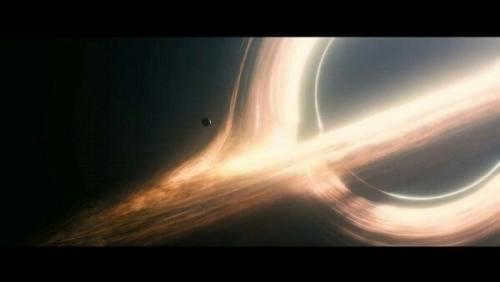
2 Black hole mass.
The mass of a black hole is so immense and its gravitational pull is so strong that it can actually distort the space-time fabric around it, in accordance with Einstein’s theory of general relativity. Even light is unable to escape its grasp.
The point of no return for light is known as the event horizon, and the distance from the center to the event horizon is referred to as the gravitational radius or Schwarzschild radius.
3 Black hole theory.
Once particles and rays of light cross the event horizon, they are inexorably drawn towards the center and are forever hidden from view.
Among the most peculiar entities in the universe are these 4 objects.
When observed from afar using a telescope, it seems as if an entity crossing the event horizon starts to decelerate and solidify, as if it hasn’t actually crossed that boundary. As time passes, the emitted light shifts towards the red end of the spectrum, growing fainter and its wavelength extending, until it vanishes from sight altogether, transforming into infrared radiation and subsequently radio waves.
Imagine a scenario where someone is falling into a black hole. If this person were somehow able to maintain consciousness and return from the black hole, they would recount a sequence of sensations. At first, they would feel weightless, as if they were in free fall. However, this would quickly give way to a powerful gravitational pull, drawing them closer to the center of the black hole. As they approach the center, the gravitational forces intensify, causing their body to stretch and eventually tear apart. Throughout this harrowing descent, they would witness a distorted image, as if light were engulfing them. Additionally, they would observe light from outside the black hole being pulled inward, creating a mesmerizing spectacle.
6 Black holes have a gravitational force that is distinct to them. However, it is crucial to understand that the gravitational field of a black hole is identical to that of other celestial bodies with the same mass. In simpler terms, black holes attract nearby objects in the same manner as regular stars do – any object in close proximity to the event horizon will fall into the black hole.
7 Mole holes.
According to theoretical concepts, a wormhole is a passage in space-time that allows for a shortcut between two different parts of the universe. Interestingly, these structures can sometimes appear quite similar to black holes when observed from the outside.
9 Black hole evaporation is now believed by physicists to occur due to the emission of a small number of photon particles. This causes black holes to gradually lose mass and weaken in compression. The proposed theory, named Hawking radiation after Professor Stephen Hawking who introduced it in 1974, is yet to be confirmed.
However, the process of black hole evaporation is extremely slow, and only the smallest black holes have had enough time to vaporize a significant amount of matter over the 14 billion years of the universe’s existence.
10 Supermassive black holes are believed to exist at the centers of most galaxies. These black holes play a crucial role in keeping hundreds of star systems nearby, thus maintaining the cohesion of the galaxies.
The Closest Black Hole to Earth: Nearest Black Hole
The nearest black hole to Earth is situated approximately 7,800 light-years away. In terms of astronomy, this can be considered relatively close. For comparison, the closest star system to us, Alpha Centauri, is located about 4.24 light-years away, while the most distant galaxy known to astronomers is approximately 16 billion light-years away. The black hole V404 Cygnus, found within the Swan constellation, possesses a mass 12 times greater than that of the Sun. This particular black hole is part of a binary system, which includes a smaller G or K class star in orbit around it. The star completes a full revolution around the black hole every 6.5 days. As the black hole exerts its gravitational pull, it gradually draws in matter from its companion star, forming an accretion disk of molten plasma, which was how it was initially discovered. Black holes are objects with such immense gravitational force that even light, traveling at a speed of 299,792,458 ± 1.2 m/s, cannot escape them. Hence, these objects can only be detected by their influence on neighboring stars. Periodically, the matter overflowing into the black hole becomes heated and emits a bright glow. Simultaneously, X-rays and radio waves are actively emitted.
Previously, it was believed that V404 was at least twice as distant from us. However, in 2009, the technique of motion parallax was applied to a black hole for the first time. As the Earth orbits the black hole, the position of the star in the sky changes. The High Sensitivity Array, an international network of radio telescopes, tracked the movement of the black hole and the outer remnants of the star in the sky over the span of a year. Previous studies had a significant margin of error (approximately 50%), as they did not consider the error caused by interstellar dust absorption. The most recent study has reduced the error to no more than 6%. The future study of this star will aid scientists in understanding the process of black hole formation. It is anticipated that this will provide insight into the differences between black holes formed without a supernova explosion and those that have undergone the supernova explosion stage.
Black holes are created during the last phases of the life cycle of massive stars. Within regular stars, nuclear reactions occur, resulting in the release of enormous amounts of energy and the maintenance of extremely high temperatures (ranging in the tens and hundreds of millions of degrees Celsius). The gravitational forces strive to compress the star, while the pressure forces from the hot gas and radiation counteract this compression. As a result, the star remains in a state of hydrostatic equilibrium.
Furthermore, a star can maintain a state of thermal balance when the energy released from thermonuclear reactions at its core matches the amount of energy radiated from its surface. However, this equilibrium is disrupted as the star undergoes contraction and expansion. In the absence of movement, the equilibrium is established in a manner where the gravitational contraction energy (negative potential energy) of the star is always twice the absolute value of its thermal energy. This unique property results in the star having a negative heat capacity. Unlike ordinary objects with positive heat capacity, such as a piece of iron that cools down when losing energy, the star experiences the opposite effect. As it loses energy through radiation, the temperature at its core actually increases.
This unusual characteristic, which may seem strange at first, can be easily explained: the star undergoes a gradual shrinking process, which leads to various effects. During this compression, potential energy is converted into kinetic energy, causing the star’s layers to fall inward and heat up its interior. Interestingly, the thermal energy gained from compression is twice the amount of energy lost through radiation. As a result, the temperature inside the star increases, enabling continuous thermonuclear fusion of elements to occur. For instance, the conversion of hydrogen into helium in our current Sun takes place at a temperature of 15 million degrees Celsius. However, in about 4 billion years, when all the hydrogen in the Sun’s core has been converted into helium, a much higher temperature of around 100 million degrees will be needed for further synthesis of carbon atoms from helium atoms. This is because the electric charge of helium nuclei is twice that of hydrogen nuclei, and bringing helium nuclei close enough together for fusion requires a much higher temperature. Fortunately, the Sun’s negative heat capacity ensures that it will reach this necessary temperature by the time the internal thermonuclear reaction of transforming helium into carbon ignites.
The true nature of black holes
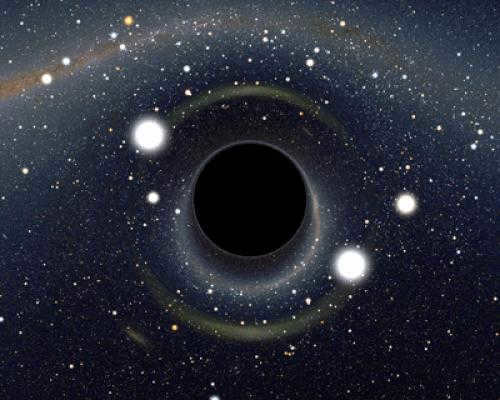
A simplified explanation of this phenomenon is as follows: a black hole is a region of space-time with such an incredibly strong gravitational pull that nothing, not even particles of light, can escape its grasp.
Originally, a black hole was a massive star. While thermonuclear reactions sustain high pressure in its core, everything remains stable. However, as the star’s energy supply depletes over time, the celestial body starts to collapse under the force of its own gravity. The final stage of this process is the implosion of the star’s core, resulting in the formation of a black hole.
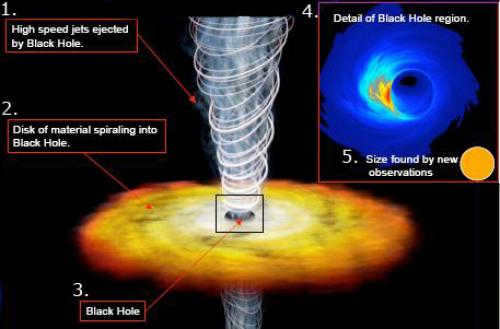
- 1. High-speed ejection of a jet by a black hole
- 2. The matter disk expands, transforming into a black hole
- 3. Singularity of a black hole
- 4. Detailed diagram of the black hole region
- 5. The newly discovered observations reveal the size
The prevailing theory suggests that similar phenomena occur in every galaxy, including the core of our Milky Way. The immense gravitational force of a black hole can keep multiple galaxies in its vicinity, preventing them from drifting apart. The extent of this “coverage” can vary depending on the mass of the star that collapsed into a black hole, potentially spanning thousands of light years.
White hole. Theories regarding the existence of white holes
Assuming the existence of white holes, the questions arise: where do they originate from and what implications would their formation have on humanity?
Let’s envision a black hole (also known as a collapsar) that gradually forms over time. In contrast, a white hole can be considered as its complete opposite. Here are a few points to consider:
- Black holes exert a strong gravitational pull, causing matter in space to be drawn towards them, whereas white holes theoretically repel matter.
- Similar to how one cannot escape the event horizon of a black hole, it is also impossible to enter the event horizon of a white hole.
- A collapsar absorbs matter, thus releasing energy, whereas a white hole expels matter and absorbs energy, and so on.
The discovery of a collapsar in the universe has been a long-standing mystery. The formation of white holes in the universe has remained a speculative hypothesis.
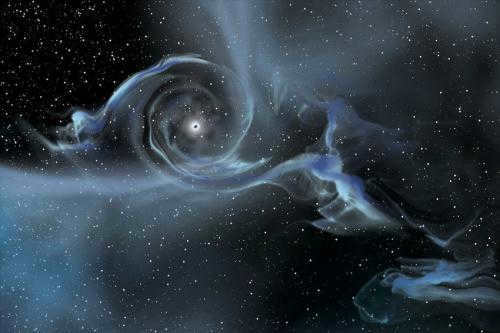
Nonetheless, a team of Israeli scientists is making the bold claim that they have captured an image of a white hole resembling a sudden burst of light. The properties of this hypothetical white hole flash differ from previously observed celestial bursts. According to the scientists, the instantaneous disintegration of a white hole is reminiscent of the Big Bang, but on a much smaller scale. This explosive event has been dubbed the Small Explosion, and it is characterized by the sudden release of vast amounts of energy and matter seemingly out of thin air. It’s as if everything that was once contained within the white hole is forcefully expelled.
Without a doubt, like in any theoretical scenario, there exist individuals who possess absolute certainty regarding the presence of white holes. A team of scientists at Aix-Marseille University in France are diligently striving to convey to humanity that the concept of black and white regions within the fabric of space-time has been firmly grounded in physics for quite some time, encompassing the principles of quantum gravity loops.
Can a person survive in a Black Hole?
Is it possible for someone to remain alive if they become trapped within a black hole?
Physicists in the United States have conducted a series of experiments that shed light on what could happen to a person if they were to find themselves inside a black hole. Contrary to previous beliefs, these studies suggest that a body caught in a black hole would not be ripped apart. Instead, the person would be duplicated, and one of the versions would be immediately destroyed by a stream of hot particles ejected into the universe. The surviving version of the individual would then peacefully cross the event horizon, albeit without the possibility of returning.
The phenomenon known as Hawking radiation was named after the British theoretical physicist Stephen Hawking, who first described it.
So, based on this interpretation, it can be concluded that the event horizon serves as a boundary between different realities – for those who remain on the outside of the black hole, the individual who enters it will vanish indefinitely, while the person inside will perceive no change. However, once within the black hole, one is fated to an eternal existence in complete darkness and silence…
Due to the distortion of space and time, the laws of physics become ineffective beyond the event horizon. In a way, this grants a semblance of immortality to the human, albeit a highly questionable one.
Based on the principles of quantum physics, it is impossible for information to be lost or vanish permanently, therefore an individual would have to endure being consumed by fire in order to traverse the event horizon. However, in this scenario, the validity of Albert Einstein’s theory of relativity is called into question, as it suggests that a person can transit the event horizon unscathed due to the gravitational curvature of space, resulting in a “rupture” in reality itself.
Currently, our understanding of the characteristics of black holes remains limited, with scientists dedicating their efforts to unraveling the enigma they present.
What happens if you fall into a black hole: A spiral and duplicates of stars
If one were to observe a black hole from a lateral perspective, it would become apparent that its shape is spherical, rather than flat like the “portable black hole” depicted in the Willy Coyote cartoon.
According to classical theory, a black hole is in a constant state of rotation (with rotational speeds reaching the speed of light). Due to its immense gravitational force, it attracts a tremendous amount of gas and dust, which forms a disk and spirals around it. This is what would become visible to an observer who approaches the black hole.
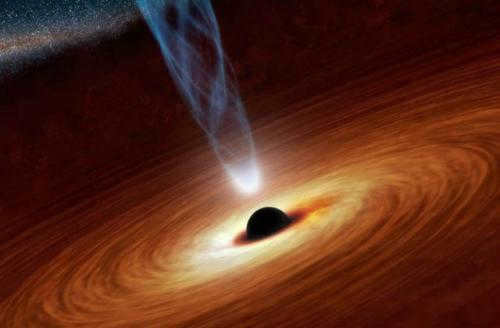
However, the physicists involved in the production of the film “Interstellar” have reached the conclusion that an individual who falls into a black hole may observe duplicated versions of stars or even the entire galaxy. This is due to the black hole’s rotation, which causes distortion of light and the reflection of its surrounding environment.
Based on this rationale, the researchers created their own depiction of a black hole for the movie.
An individual trapped within a black hole would also be able to witness its shadow encircled by a halo of light. Interestingly, scientists have long been searching for the shadow of a black hole. If they were to successfully observe it, it would serve as direct evidence of the existence of this phenomenon.
Understanding the Organization of Black Holes
Today, we will delve into the enigmatic and formidable nature of black holes. These celestial entities continue to baffle astronomers and physicists alike. The mere existence of black holes instills a primal fear, as our limited understanding of their extraordinary composition and immense power serves as a reminder of how little we truly comprehend about our vast cosmic abode – the universe.
Let us begin by providing a definition. A black hole is an area in space where the gravitational force is so overwhelmingly intense that neither light nor matter can escape its grasp. Defying the pull of these colossal cosmic entities would require surpassing the speed of light, a feat which is inherently impossible.
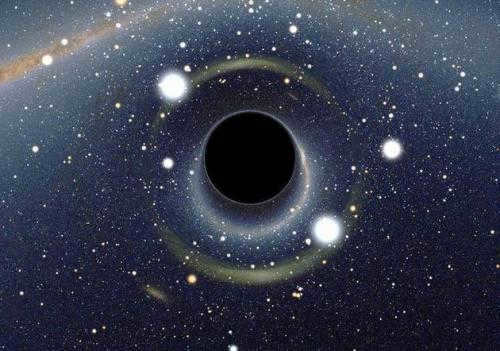
Picture yourself aboard a spaceship in a remote galaxy, when suddenly, out of nowhere, you find yourself approaching a black hole. The initial sensation you experience is an intense gravitational pull, emanating from the “event horizon” – the outer edge of the black hole, from which even light cannot escape. In reality, once you cross this event horizon, nothing can survive. However, for the sake of imagination, let’s assume you manage to remain intact and continue your journey.
Black holes can reach masses that exceed hundreds of thousands of times the mass of our sun. This immense weight is acquired when a once “alive” star, after billions of years of existence, begins to deplete its nuclear fuel. As a result of these processes, the star’s core starts to shrink relentlessly, releasing an enormous amount of energy. Eventually, it transforms into a black hole.
Scientists have discovered that the largest black hole known to date is located in the galaxy IC 1101. This black hole has a mass of 17 billion times that of our sun, which accounts for approximately 17% of the gravitational pull of the entire IC 1101 galaxy! Another contender for the title of the largest black hole in the universe is found within a blazar, a unique type of extragalactic object. Inside this blazar, there exists a “black giant” that weighs 18 billion solar masses. This black hole is so massive that it has another smaller black hole orbiting around it.
Revealing the Mystery of “Black Holes” by Russian Scientist Nikolai Levashov
In his book “The Last Address to Mankind,” scientist Nikolai Levashov addresses the main challenge faced by all theories about the Universe – the enigmatic nature of “black holes.”
According to Levashov, a “black hole” refers to a space region that remains constant and absorbs all matter that enters its domain. Although matter is consumed by these phenomena, no emission is observed. This phenomenon aligns with the fundamental law of physics, known as the law of conservation of substance and matter. This law not only exists in nature but also confirms its universal presence beyond human imagination.
The existence of apparent contradictions arises solely from the fact that the models we have created to understand the Universe are incomplete and therefore cannot provide a comprehensive understanding of natural processes.
The key idea is that human perception, aided by scientific instruments, can only grasp a small fraction of the vast expanse of interconnected spaces that make up the Universe. Each of these spaces is composed of specific forms of matter, often referred to as “dark matter” or “dark energy”. In our own space-universe, there are 7 distinct forms of matter. It is situated between two parallel space-universes, each composed of a different number of forms of matter – 6 in one and 8 in the other.
The spaces exhibit heterogeneity, leading to the existence of regions where they intersect. When the space of 8-dimensional matter intersects with the space of 7-dimensional matter, or when the space of 7-dimensional matter overlaps with the space of 6-dimensional matter, matter from the first space diminishes into the second space accordingly. This process occurs through areas of bending. It is important to highlight that during this transition of matter from one space-universe to another, matter breaks down into various forms and then reassembles, while losing one form in its composition, which remains within the bending region.
Explaining a Black Hole in Layman’s Terms. How to Evade a Black Hole
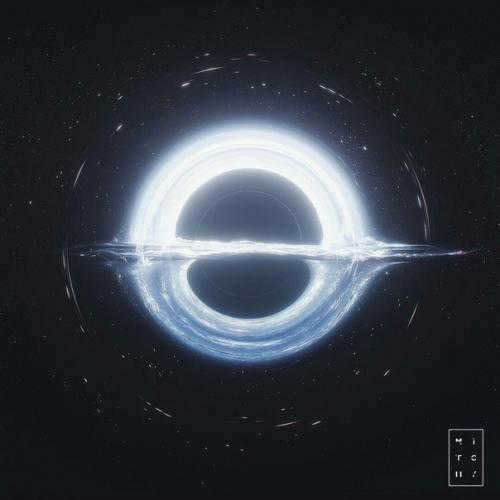
What exactly is a black hole? Simplifying the concept of black holes
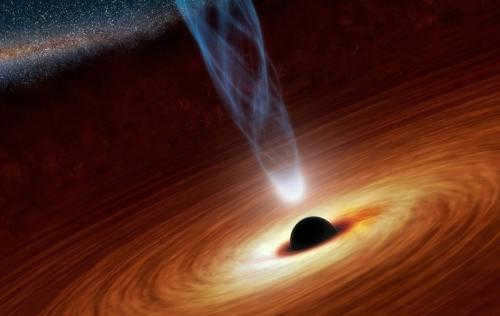
What occurs if you enter a black hole: A spiral and duplicates of stars
Upon observing a black hole from a lateral perspective, it becomes evident that it possesses a spherical form, rather than a flat one akin to the “portable black hole” depicted in the Willy Coyote cartoon.
Based on classical theory, a black hole is in a perpetual state of rotation (with rotational velocity reaching the speed of light), and due to its immense gravitational pull, it attracts an extensive amount of gas and dust, resulting in the formation of a disk that spins in a spiral. This is precisely what an individual approaching a black hole would perceive.
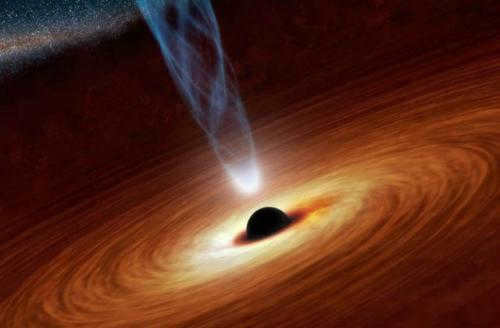
However, the physicists involved in the production of the film “Interstellar” have reached the conclusion that an individual falling into a black hole may witness the presence of duplicated stars or even an entire galaxy due to the black hole’s rotational properties causing light distortion and reflection of its surroundings.
Based on this line of thinking, the researchers created their own rendition of a black hole for the movie.
If a person were to become trapped within a black hole, they would also have the ability to observe its silhouette encircled by a halo of light. Interestingly, scientists have spent years attempting to capture an image of a black hole’s silhouette. If successful, such an image would serve as direct evidence of the existence of this phenomenon.
Black hole for kids – an explanation with pictures, how to find in the universe, how they form, star death, and supermassive black holes in galaxies.
For young children, parents or teachers should explain that it is a big mistake to think of a black hole as empty space. On the contrary, there is a tremendous amount of matter packed into a small area. To make it easier to understand for kids, imagine taking a star 10 times bigger than the Sun and trying to squeeze it into an area the size of New York City. Because of this squeezing, the gravitational pull becomes incredibly strong, so strong that nothing, not even light, can escape. Thanks to advancing technology, NASA has been able to discover more and more about these mysterious objects.
To introduce the concept to children, let’s start by explaining that the term “black hole” was not coined until 1967 by John Wheeler. However, long before that, there were mentions of mysterious objects that, due to their density and mass, do not emit light. These objects were even predicted by Albert Einstein in his general theory of relativity. According to this theory, when a massive star reaches the end of its life, it leaves behind a small and incredibly dense core. If the star’s mass is three times that of the sun, gravity becomes so strong that it overpowers all other forces, resulting in the formation of a black hole.
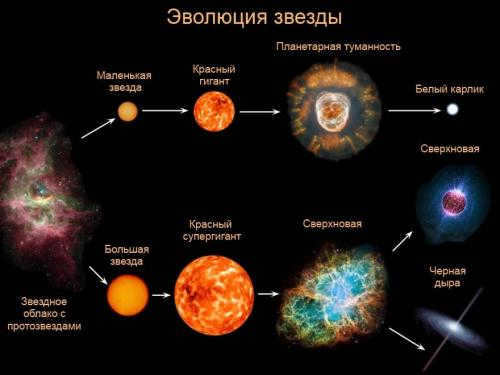
The process of the formation of a black hole
It is important to explain to children that scientists are unable to directly observe the characteristics of black holes (telescopes can only detect light, X-rays, and other forms of electromagnetic radiation), so it is not possible to obtain a photograph of a black hole. However, it is possible to calculate their position and even determine their size based on the impact they have on surrounding objects. For instance, if a black hole passes through a cloud of interstellar matter, it will begin to pull the matter inward through a process called accretion. The same thing can happen if a star comes too close to a black hole. In fact, the star may even be torn apart.
When a black hole becomes attracted to matter, it goes through a process where it heats up and gains speed, causing it to emit X-rays out into space. Scientists have recently made some exciting findings, observing intense gamma ray bursts that provide evidence of a black hole consuming nearby stars. During this process, some stars are stimulated to grow while others come to a halt.
A black hole’s formation begins with the demise of a star
Black holes typically form from the leftover material of dying massive stars, known as supernova explosions. On the other hand, smaller stars transform into dense neutron stars, which lack the necessary mass to retain light. However, a star that possesses three times the mass of our sun has the potential to become a black hole. It is crucial to elucidate a peculiar phenomenon to children: as a star collapses, its outer layer approaches an imaginary boundary known as the event horizon. At this point, time on the star’s surface slows down compared to that experienced by an observer. Once the surface reaches the event horizon, time effectively freezes, preventing further collapse of the star and transforming it into a frozen object in the process.
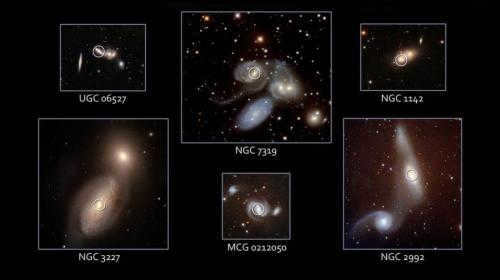
Black holes located at the cores of merging galaxies
When two galaxies collide, larger black holes have the potential to form. In December 2004, the NASA telescope captured remarkable gamma ray bursts, which were fleeting bursts of intense light. Subsequent analysis by the Chandra and Hubble telescopes revealed that these bursts may be indicative of a collision between a black hole and a neutron star, resulting in the creation of a brand new black hole.
Even though children and parents have managed to understand the process of formation, one aspect remains a puzzle. It appears as though the voids exist on two distinct scales. There are numerous dark abysses that are the residue of colossal celestial bodies. They generally weigh 10 to 24 times more than the Sun. Astronomers frequently observe them when an extraterrestrial star passes in close proximity. However, the majority of black holes exist in isolation and are simply imperceptible. Nevertheless, based on the quantity of stars that are sufficiently large to be considered potential black holes, there must be tens of millions of billions of such enigmatic voids in the Milky Way.

There are also incredibly massive black holes that are a million or even a billion times larger than our Sun. It is widely believed that these enormous entities reside at the centers of nearly all large galaxies, including our own.
Interestingly, scientists used to think that there was no such thing as an average-sized black hole. However, data from the Chandra, XMM-Newton, and Hubble telescopes have proven otherwise.
Maybe the emergence of supermassive black holes is due to a domino effect triggered by the collision of stars in dense clusters. As a result, a significant number of massive stars accumulate, undergo collapse, and give rise to black holes. These clusters then take up residence in the core of galaxies, where the black holes merge and transform into a supermassive entity.
You might have already realized that it is impossible to observe a black hole in high definition online since these entities do not emit light. However, children can find it fascinating to examine photos and diagrams depicting the interaction between black holes and ordinary matter.
Today, we will discuss enigmatic and formidable black holes. These celestial entities continue to baffle numerous astronomers and physicists. Their mere existence instills a primal fear, as our limited understanding of their extraordinary structure and immense power underscores how little we truly comprehend about our shared abode – the universe.
Let us commence with a definition. A black hole is a space region where the gravitational force is so incredibly strong that neither light nor matter can escape the hole’s confines. To surmount the pull of these colossal behemoths, an object’s velocity must surpass that of light, which is inherently impossible.

Picture yourself aboard a spaceship in a remote galaxy, when suddenly, out of nowhere, you find yourself approaching a black hole. The initial sensation you experience is an intense gravitational pull caused by the “event horizon” – the boundary of the black hole that even light cannot escape. In reality, nothing can survive once it crosses the “event horizon”, but for the sake of imagination, let’s assume that you remain intact, alive, and continue onward.
The area beyond the “event horizon” is known as a singularity – it represents the moment when the material remaining from a previously supermassive star condenses to densities and gravitational forces of infinite magnitude within a brief timeframe. Esteemed physicist Stephen Hawking views the singularity as the point at which the conventional understanding of space and time ceases to apply. Consequently, should one discover a means to surpass the “event horizon,” they would encounter a remarkable outcome: everlasting existence beyond the constraints of time and space, or immediate demise.
Black holes can possess masses that exceed hundreds of thousands of times the mass of our sun. This immense weight is acquired when a once “living” star, after billions of years of existence, starts to deplete its nuclear fuel. As a result of these processes, the star’s core begins to contract relentlessly, releasing vast amounts of energy. Eventually, it transforms into a black hole.
Scientists speculate that the largest black hole resides in the IC 1101 galaxy. It boasts a mass of 17 billion solar masses, which accounts for 17% of the gravitational pull within the entire IC 1101 galaxy! There is another contender for the title of the largest black hole in the universe. It is situated within a blazar, a unique type of extragalactic object. Inside this blazar, a massive “black giant” weighing 18 billion solar masses exists. This black hole is so colossal that it even has a smaller black hole orbiting around it.
Discovery of Black Holes: A Plethora of Intermediate Mass Black Holes

Among the different kinds of black holes, the intermediate (or intermediate) mass black holes are particularly noteworthy. These black holes have a mass much greater than that of stellar-magnitude black holes (ranging from 10 to a few tens of solar masses), but much smaller than that of supermassive black holes (ranging from a million to hundreds of millions of solar masses). It was previously believed that this type of black hole was significantly less common compared to the other two categories mentioned. However, a recent finding has challenged this perspective.
In the year 2018, researchers made a groundbreaking discovery regarding the frequent occurrence of medium-mass black holes. Curiously, these enigmatic entities are predominantly located within the nuclei of diminutive galactic formations. Upon unraveling this perplexing pattern, the once elusive classification of black holes ceased to be considered as an uncommon phenomenon. Furthermore, the revelation of this particular phenomenon holds the potential to unravel an additional enigma associated with these celestial anomalies.
One of the most urgent inquiries in contemporary astronomy revolves around the essence of supermassive black holes. Astronomers are perplexed by the rapid growth of certain supermassive black holes in relatively compact galaxies since the inception of the universe. Shedding light on this enigma may be the existence of intermediate-mass black holes. One theory posits that supermassive black holes may have evolved from intermediate-mass black holes, while another suggests that they were initially formed in such a state. However, the precise mechanisms behind this phenomenon remain elusive, although the scientific community appears to be making progress in uncovering the answers.

A black hole is one of the most enigmatic phenomena in the cosmos. It poses an immense challenge to detect, as it lacks any emission of light, rendering it practically imperceptible.
Think of a black hole as a rupture in the fabric of space. Its gravity warps space so intensely that it engenders a void from which nothing can escape once ensnared, not even light rays.
Active black holes assimilate matter from their surroundings, growing in mass. Consequently, their sphere of influence expands, enabling them to accrue additional matter.
However, there also exist “dormant” black holes, which persist but remain starved of matter. When certain events occur, they reawaken once more.
Black holes play a vital role in shaping the Universe. Their absence would have a significant impact, possibly resulting in the absence of galaxies altogether. Scientists are currently investigating the extent of black holes’ influence on galaxy formation.
Black holes are incredibly dark, emitting no light at all. The immense gravitational force of a black hole causes light rays to deviate from their original path. The effects on a light ray vary depending on its proximity to the black hole.
Ways to locate a black hole
One method involves the phenomenon of the light rays’ bending. Whenever there is a black hole positioned between us and a distant galaxy, the light emitted from the galaxy will undoubtedly be curved due to its passage through the gravitational field of the black hole.
This bending of light is scientifically referred to as gravitational lensing. This occurrence also takes place when there are massive collections of matter, such as galaxies or clusters of galaxies, obstructing the path and causing the light from the objects behind them to bend.
An intriguing outcome of this is that a galaxy might appear multiple times, with copies of itself forming a distinctive ring encircling the black hole. These rings become noticeable when the Hubble Space Telescope captures images of star fields, for instance. Although the black hole itself remains invisible, the presence of these rings provides a clear indication of its existence.
Nevertheless, the position of the galaxy or star is shifting, causing it to deviate from its precise location.
When light rays from a distant star traverse the gravitational field of a black hole, they get diverted from their original path.
As a result, an observer on Earth perceives the star in a different position than its actual location. The displacement can be significant, sometimes exceeding two times the original distance!
If the black hole was previously part of a binary star system in which one star evolved into a black hole, it continues to draw material from the remaining star incessantly.
During this process, an accretion disk forms around the black hole, where the captured material revolves and gradually plunges into it.
Supernova Explosion
At the end of its life, a colossal star undergoes a violent explosion known as a supernova, which expels its outer layers. The remaining core of the star collapses and compresses into an incredibly compact form. In this process, a black hole is formed, trapping any light within its gravitational pull.
If our Sun were to experience such an event, it would shrink to a mere diameter of 3 km!
For a supernova to occur, a star must have a mass of at least eight times that of our Sun. Once the outer layers have collapsed, the resulting black hole is a remarkable concentration of the former star’s mass within an infinitesimal space.
It is believed that black holes can form when two stars collide and combine their masses. If the combined mass exceeds a certain threshold, the resulting star collapses into a black hole.
Sombrero Galaxy
There exist supermassive black holes that have a mass of one million or even one billion times that of our Sun. These black holes are located in the center of most galaxies.
Their origins are still not fully understood and are currently being researched. One possibility is that they formed through the merger of multiple black holes. Another possibility is that they accumulate a significant amount of matter from their surroundings over time, resulting in their extreme mass. It is believed that the presence of a black hole is crucial for the formation of a large galaxy.
The laboratory may soon be able to create miniature black holes.
It is difficult to determine whether there are small black holes in the universe because they are impossible to track. However, who knows, perhaps there is one living in a washing machine and consuming objects from there?
Primordial black holes are currently just a theory, but there is the possibility that they formed shortly after the Big Bang, when matter was densely packed into a small space. It is believed that in certain areas, the density was so high that it led to the creation of a black hole.
Black holes captivate the imaginations of both scientists and non-scientists alike. However, not everyone fully comprehends what a black hole truly is.
On our Telegram channel, students can find a wealth of useful and fascinating information.
To put it frankly, no one on Earth knows with 100% certainty what a black hole is. These objects absorb light, making direct observation impossible. In other words, you can’t just look at a black hole.
The presence of these enigmatic regions of space-time was foreseen within the framework of the general theory of relativity and currently remains speculative, albeit nearly all scientists concur that black holes do exist.
A black hole is a region in space-time with an incredibly strong gravitational force that no object (even if traveling at the speed of light) can overcome.
A black hole possesses an exceedingly high density. To illustrate, a black hole with the mass equivalent to that of the Earth would possess a radius of merely 9 millimeters. Interested in transforming the Earth into a black hole? Simply compress it to the size of a ball with a diameter of 18 millimeters. An object with such density would commence absorbing any light that falls upon it.
What is the method of observing a black hole? It can only be done through indirect indicators. For instance, if a black hole is in a system with a visible star, the gravitational pull will attract the gas from the star. As a result, the heated gas will emit strong X-ray radiation, which can be detected.
As of now, the issue of black hole existence remains unsolved since there is no experimental proof to confirm their existence.
To gain a deeper comprehension of the notion of a black hole, we can examine the scenario of the Schwarzschild black hole. This particular model represents a simplified version of a spherically symmetrical black hole, solely defined by its mass.
An instance of such a black hole can hypothetically originate from a dying star that lacks both electric charge and magnetic field. Furthermore, this star must not possess any rotational motion. The diagram below provides a visual representation of the structure of a black hole:
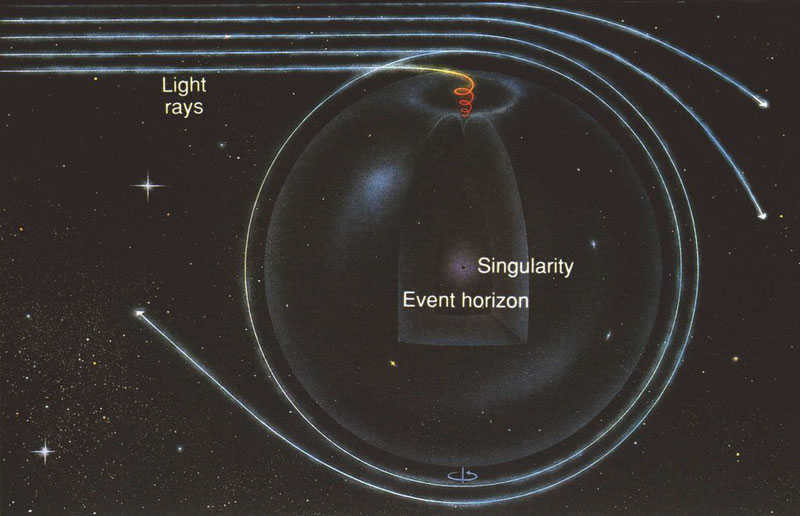
The black hole is encompassed by a photon sphere, which is made up of light rays that have been captured by the black hole and are moving in unstable circular paths around it. Inside the photon sphere, you will find the event horizon. The event horizon is the point of no return for anything that enters the black hole.
Anything that goes beyond the event horizon, including matter and information, can never escape from this one-way permeable surface.
At the core of the black hole, there is a singularity – a region of space-time that is infinitely curved. Everything that crosses the event horizon gets pulled into the singularity, and it ceases to exist in the way we are familiar with.
Various Kinds of Black Holes in the Universe
Modern astrophysics recognizes three distinct types of black holes in the vast expanse of the Universe: stellar, supermassive, and relic.
Stellar Black Holes
These particular black holes possess stellar masses and originate from the life cycle of massive stars. It’s worth mentioning that black holes only form from stars that surpass the mass of the Sun by 20-40 times.
Another plausible scenario for the creation of a stellar black hole is through gas accretion.
Accretion is the process through which matter from the surrounding space gradually falls onto a cosmic entity.
The gas descends onto the neutron star until its mass surpasses the maximum limit for neutron stars. At this point, the neutron star collapses, transforming into a low-mass black hole.
By the way! Just for all our readers, we have an amazing offer of 10% off on any type of project.
Enormous black holes
It is believed that these massive black holes reside in the cores of galaxies. Their mass can reach up to 10^9 times the mass of the Sun. These findings are based on the examination of star movements near the cores of galaxies.
Additionally, there is a theory suggesting that supermassive black holes exist in the cores of quasars – celestial objects that are relatively unexplored and located at the farthest distances observable from Earth. Quasars serve as the centers of galaxies and contain a black hole at their core.
Quasars are extremely bright and compact, and can be detected even at a distance of 10 billion light-years. These celestial objects emit massive amounts of energy across the entire electromagnetic spectrum, with a particular emphasis on the infrared region.
Main or ancient black holes
The tiniest black holes, which formed during the early stages of the Universe. As the result of unevenness in the Big Bang, certain pockets of matter were able to collapse into black holes while the rest of the matter continued to expand.
A black hole does not always have to be large and heavy. Some scientists propose that certain primary black holes may be much smaller than a proton in size.
If you’re interested in learning about how a nuclear reactor functions, we have another article on the topic. And if you require any assistance with your studies, don’t hesitate to reach out to Student Service #1.
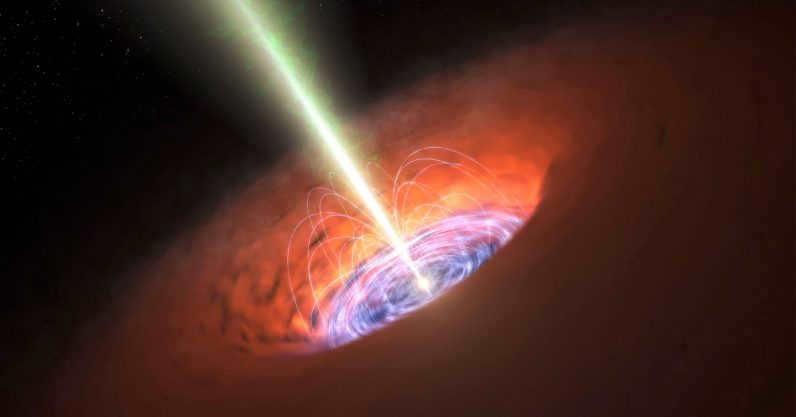
Halloween is a time for apparitions, creatures, and spirits, but there is nothing more terrifying in the cosmos than the enigmatic phenomenon known as black holes.
Black holes represent regions in the vast expanse of space where the gravitational force is so immensely powerful that nothing, not even light, can escape their grasp. In recognition of their significance, the 2020 Nobel Prize in Physics was awarded to Roger Penrose for his groundbreaking mathematical contributions, affirming the inevitability of black holes as a consequence of Einstein’s theory of gravity. Additionally, Andrea Ghez and Reinhard Genzel were jointly recognized for their groundbreaking research, which conclusively demonstrated the existence of a colossal black hole at the heart of our galaxy.
Black holes inspire fear for three distinct reasons:
- If one were to venture into a black hole formed from the remnants of a deceased star, they would face a catastrophic disintegration.
- The gargantuan black holes residing at the centers of galaxies possess an insatiable hunger, consuming anything that comes within their reach.
For more than 30 years, I have dedicated my studies to black holes, specifically focusing on the supermassive ones that reside at the core of galaxies. While these black holes are typically dormant, when they become active and start consuming stars and gas, the region surrounding them can outshine the entire galaxy in which they exist. Galaxies with active black holes are referred to as quasars. Despite the wealth of information we have gathered about these celestial objects in recent years, there is still a great deal that remains unknown.
Demise caused by a black hole
The creation of black holes occurs when a colossal star perishes. Once the star’s nuclear energy is depleted, its core collapses into an incredibly dense state – a hundred times denser than an atomic nucleus. This density is so intense that protons, neutrons, and electrons are no longer separate entities. The detection of black holes occurs when they revolve around a regular star due to their lack of luminosity. By observing the characteristics of the black hole’s companion, astronomers can deduce the properties of the black hole itself.
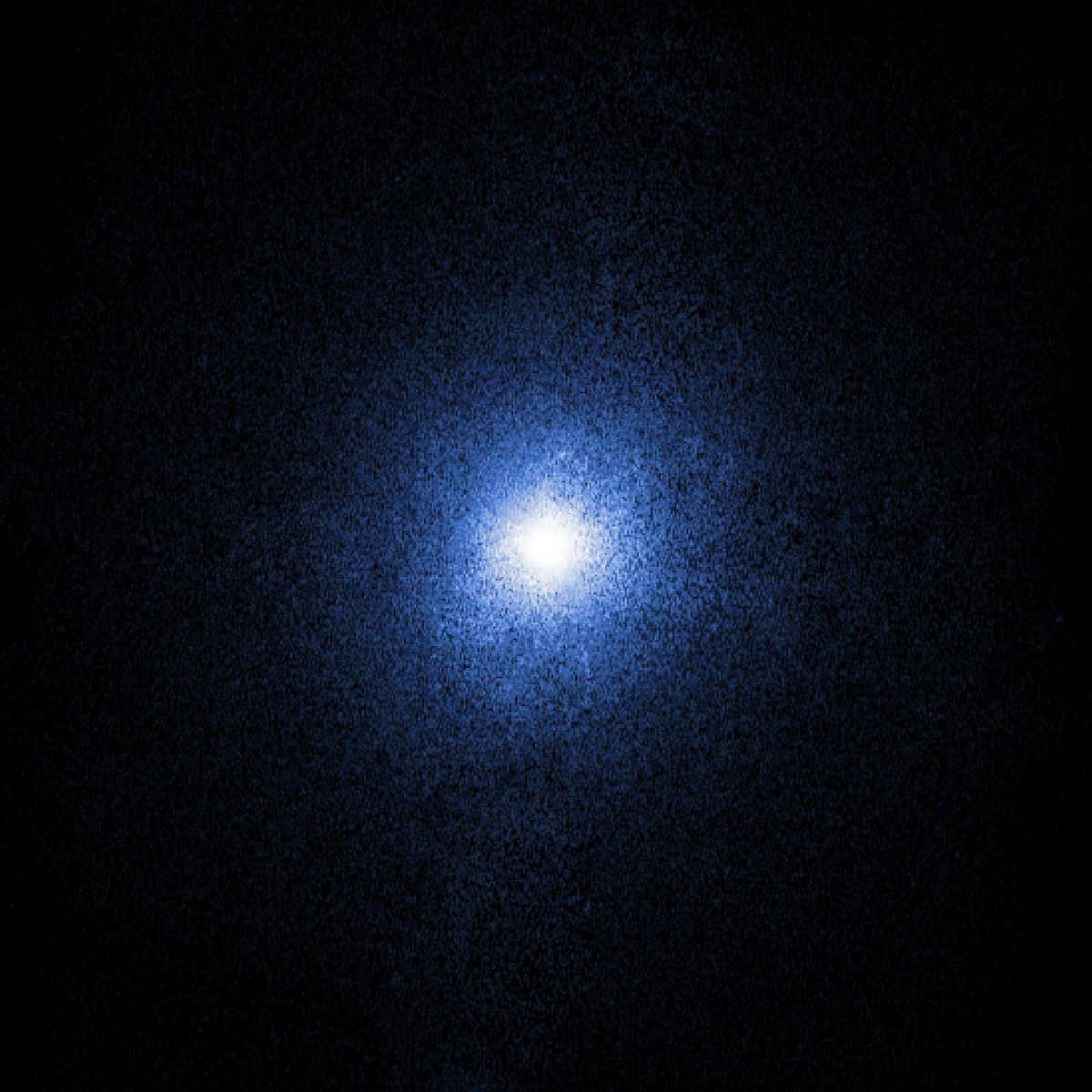
Cygnus X-1, the most luminous X-ray source in the Cygnus constellation, was the inaugural black hole to be verified. Over the course of time, approximately 50 black holes have been discovered in systems where a regular star revolves around a black hole. These instances serve as the nearest exemplars of the approximately 10 million black holes dispersed throughout the Milky Way.
Black holes are the final resting places of material. They possess an irresistibly strong gravitational pull that not even light can escape from. The destiny that awaits any object or person that falls into a black hole is spaghettification, a concept made famous by Stephen Hawking in his book, A Brief History of Time. This phenomenon involves the immense gravity of the black hole stretching and tearing apart every constituent part of the unfortunate victim, including their bones, muscles, tendons, and even molecules. In a similar vein to the inscription on the gates of hell in Dante’s The Divine Comedy, those who enter a black hole must relinquish all hope.
Over the past 30 years, the Hubble Space Telescope has made observations revealing that every galaxy contains a black hole in its center.
Nature has the ability to form black holes with an astonishing range of masses, ranging from dead stars a few times the size of the Sun to enormous monsters billions of times more massive. This is comparable to comparing an apple to the Great Pyramid at Giza.
In recent times, astronomers were able to publish an image of a black hole and its event horizon for the first time. This particular black hole, located at the center of the elliptical galaxy M87, has a mass of 7 billion solar masses.
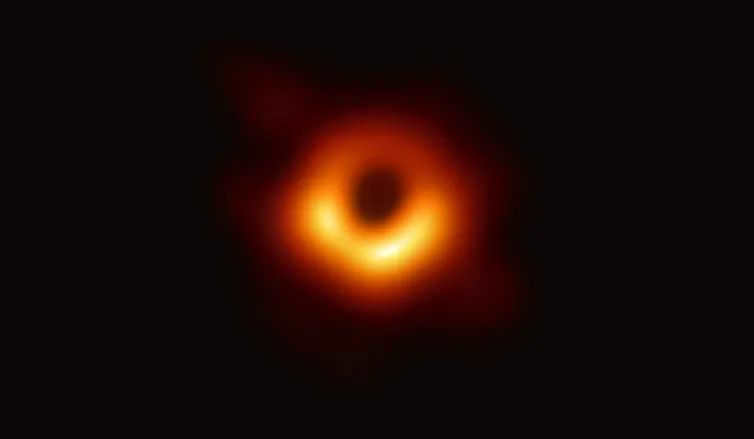
Unlike the black hole in our own galaxy, which was recently awarded the Nobel Prize, the black hole in the galaxy M87 is more than a thousand times larger. While these black holes are typically dark, they can become active and emit massive amounts of radiation when nearby stars and gas are drawn in by their gravitational pull.
There are two main dangers associated with massive black holes:
- If you venture too close, the immense gravity will consume you.
- If the black hole is in an active quasar phase, you will be bombarded with intense radiation.
Just how luminous is a quasar? Picture yourself flying above a sprawling metropolis, like Los Angeles after dark. About 100 million points of light from cars, buildings, and city streets represent the stars in a galaxy. In this comparison, an active black hole is akin to a tiny 1-inch-wide light bulb in downtown Los Angeles, surpassing the brightness of the entire city by hundreds or even thousands of times. Quasars truly stand as the most brilliant entities in the cosmos.
Unusual supermassive black holes
The most massive black hole ever observed weighs 40 billion times the mass of the Sun, or 20 times the size of the Milky Way. While the outer planets in our solar system complete one orbit every 250 years, this significantly larger object completes one orbit every three months. Its outer edge is moving at half the speed of light.
Similar to other black holes, large ones are not visible due to the event horizon. At their cores lies a singularity, a point in space where the density is infinite. We are unable to comprehend the interior of a black hole because the laws of physics break down: time stops at the event horizon and gravity becomes infinite at the singularity.





